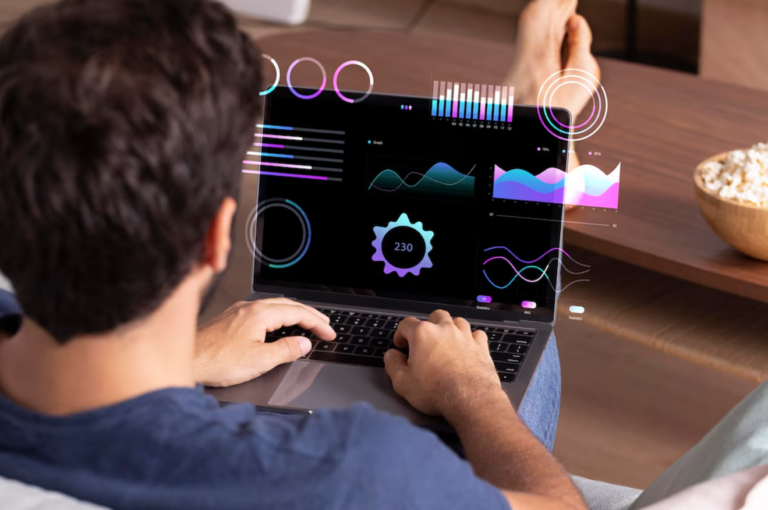How Technology is Enhancing Human-Computer Interaction
Human-Computer Interaction (HCI) has evolved significantly with the advancement of technology. Modern innovations are making interactions between humans and computers more intuitive, efficient, and natural. From voice assistants and virtual reality to touchscreens and AI-driven interfaces, here’s how technology is enhancing HCI.
Voice Assistants and Natural Language Processing
Voice assistants like Amazon’s Alexa, Apple’s Siri, and Google Assistant have revolutionized the way we interact with computers.
Natural Language Processing (NLP)
- Understanding Context: NLP algorithms enable voice assistants to understand and process human language in a way that is contextually relevant.
- Voice Commands: Users can perform tasks such as setting reminders, controlling smart home devices, and searching the web using simple voice commands.
- Conversational AI: Advanced NLP allows for more natural and fluid conversations between humans and computers, making interactions more user-friendly.
Virtual and Augmented Reality
Virtual Reality (VR) and Augmented Reality (AR) technologies are transforming the way we interact with digital environments.
Immersive Experiences
- Virtual Reality: VR headsets create fully immersive environments, allowing users to interact with digital worlds in a highly engaging manner. This technology is widely used in gaming, training simulations, and virtual tours.
- Augmented Reality: AR overlays digital information onto the real world, enhancing our perception and interaction with our surroundings. Applications include AR navigation, interactive learning, and enhanced shopping experiences.
Gesture Control
- Natural Interaction: VR and AR systems often incorporate gesture control, allowing users to interact with virtual objects using natural hand movements.
- Intuitive Interfaces: These technologies make interactions more intuitive, reducing the learning curve for users and enhancing the overall experience.
Touchscreens and Multi-Touch Interfaces
Touchscreen technology has become ubiquitous in modern devices, from smartphones and tablets to kiosks and interactive displays.
Multi-Touch Gestures
- Pinch-to-Zoom: Multi-touch interfaces support gestures like pinch-to-zoom, swipe, and rotate, providing a more interactive and engaging user experience.
- Responsive Design: Touchscreens enable responsive design, allowing interfaces to adapt seamlessly to different device sizes and orientations.
Accessibility
- Inclusive Design: Touchscreen devices can be customized with accessibility features such as larger icons, voice commands, and haptic feedback to cater to users with disabilities.
- Ease of Use: The intuitive nature of touch interfaces makes technology more accessible to a broader audience, including children and elderly users.
Artificial Intelligence and Machine Learning
AI and machine learning are driving advancements in personalized and adaptive user interfaces.
Personalized Experiences
- User Behavior Analysis: AI algorithms analyze user behavior to tailor interfaces and content to individual preferences, enhancing user satisfaction.
- Predictive Text and Recommendations: AI-driven predictive text and recommendation systems improve efficiency by anticipating user needs and preferences.
Adaptive Interfaces
- Dynamic Adjustments: Adaptive interfaces can change in real-time based on user interactions, providing a more seamless and efficient user experience.
- Context-Aware Computing: AI systems can adjust interface elements based on contextual factors such as location, time of day, and user activity.
Haptic Feedback and Sensory Technology
Haptic feedback and sensory technologies are enhancing the tactile aspects of human-computer interaction.
Tactile Responses
- Vibration Feedback: Devices equipped with haptic technology provide tactile feedback through vibrations, improving the user experience in gaming, virtual keyboards, and wearable devices.
- Force Feedback: Advanced haptic systems offer force feedback, simulating physical resistance to enhance realism in virtual environments.
Sensory Integration
- Multi-Sensory Experiences: Combining haptic feedback with visual and auditory cues creates multi-sensory experiences, making interactions more immersive and engaging.
- Medical and Rehabilitation: Haptic technology is used in medical training and rehabilitation, providing realistic simulations and aiding in the recovery process.
Brain-Computer Interfaces
Brain-Computer Interfaces (BCIs) represent the cutting edge of HCI, allowing direct communication between the brain and computers.
Neural Interaction
- Thought-Controlled Devices: BCIs enable users to control devices using their thoughts, offering new possibilities for individuals with mobility impairments.
- Enhanced Communication: For individuals with severe disabilities, BCIs can facilitate communication and interaction with the environment.
Research and Development
- Advancements in Neuroscience: Ongoing research in neuroscience and engineering is driving the development of more sophisticated and reliable BCIs.
- Potential Applications: Future applications of BCIs include mind-controlled prosthetics, gaming, and enhanced cognitive abilities.
Conclusion Technology is significantly enhancing Human-Computer Interaction, making it more intuitive, efficient, and accessible. Innovations in voice assistants, VR and AR, touchscreens, AI, haptic feedback, and BCIs are transforming the way we interact with computers. These advancements are not only improving user experiences but also expanding the possibilities for how we engage with technology. As these technologies continue to evolve, they will further bridge the gap between humans and computers, creating more natural and seamless interactions. Embracing these innovations will be crucial for developing user-friendly interfaces that cater to diverse needs and preferences.






